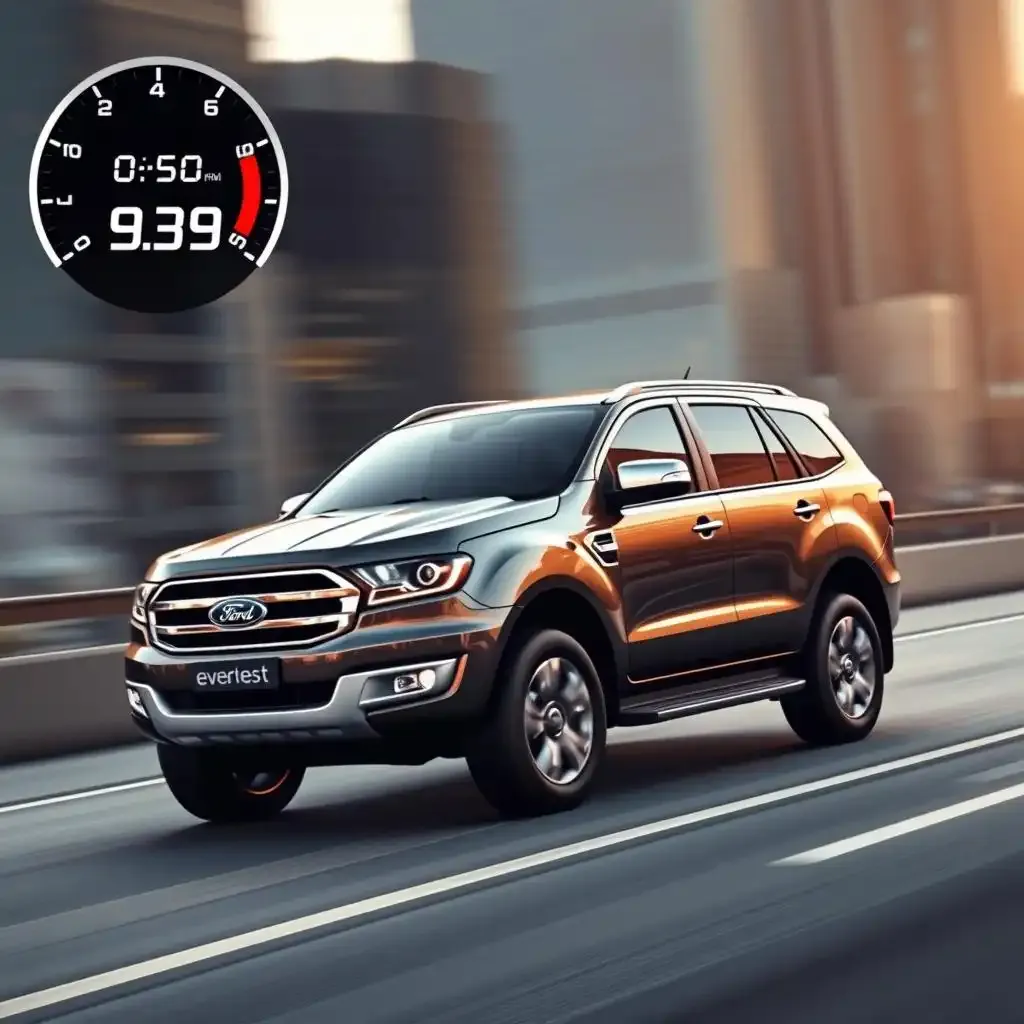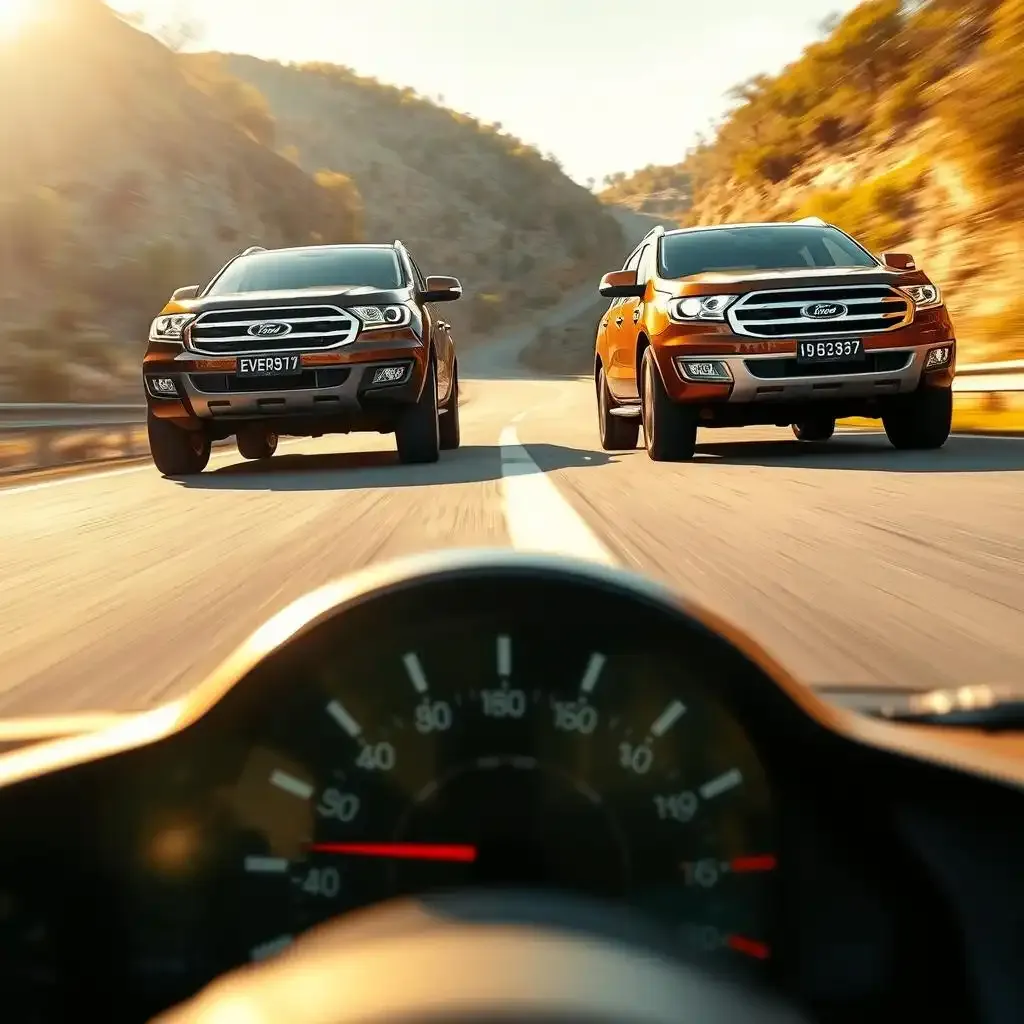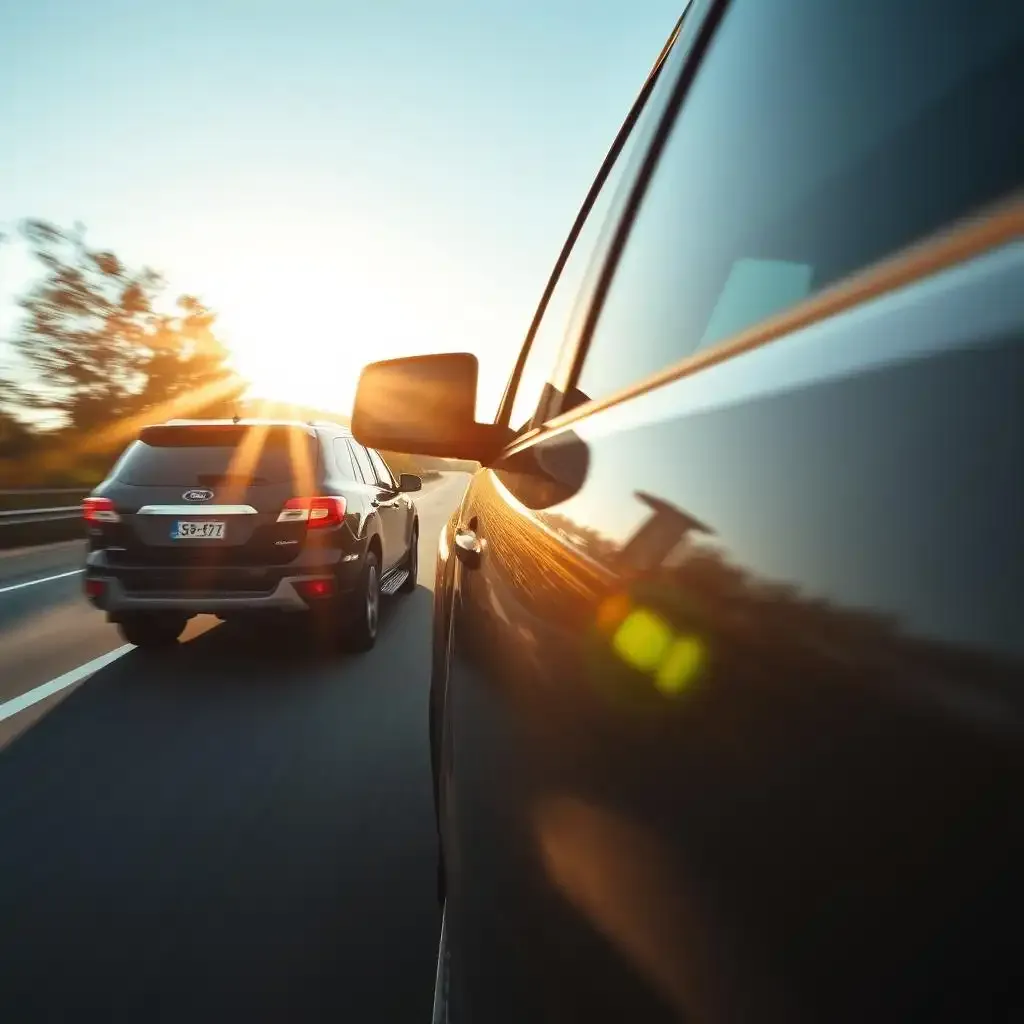Table of Contents
The Ford Everest isn't your average family SUV; it’s a robust machine capable of tackling tough terrain. But how does it perform when it comes to straight-line speed? The 0-100 km/h time is a critical benchmark for any vehicle, reflecting its acceleration prowess. This article will explore the Ford Everest's 0-100 km/h performance across its various models, focusing on the differences between the engine options, and the real-world implications of those differences. We'll explore into the data, compare the V6 and four-cylinder variants, and consider what these figures mean for the average driver. This isn't just about numbers; it’s about understanding the ability and capability of the Everest. If you're curious about how the Everest stacks up in terms of acceleration, you’ve come to the right place. Let’s get started and see what the Ford Everest 0-100 can really do.
Aspect | Details |
|---|---|
Key Performance Metric | 0-100 km/h time |
V6 Model 0-100 Time | Around 9.39 seconds (Ford Everest Platinum V6 4WD) |
Four-Cylinder Model 0-100 Time | Over a second slower than the V6 |
Engine Options | 2.0-litre Bi-Turbo four-cylinder diesel (154kW/500Nm), V6 diesel |
Model Variants | Sport, Trend, Platinum (each with varying engine options) |
Factors Affecting 0-100 Time | Engine choice, road conditions, load, tire pressure |
Ford Everest 0100: Trims and Their Performance

Ford Everest 0100 Trims And Their Performance
The Everest Lineup: Not All Are Created Equal
Okay, so you're checking out the Ford Everest, right? It's not just one car; it's like a family with different members. You've got the Sport, the Trend, and the Platinum. Think of them as different levels of cool, each with its own engine and, you guessed it, different 0-100 km/h times. It's kind of like having different characters in a video game, some are faster, some are stronger, but they're all still part of the same team.
Engine Choices: The Heart of the Matter
The engine is like the heart of the car. It's what makes it go! The Everest has a few options, but the main ones we're talking about are the 2.0-liter Bi-Turbo four-cylinder diesel and the V6 diesel. Now, the four-cylinder is like a good, steady worker; it gets the job done. But the V6? That's like the athlete who wins all the races. It's got more strength, which means it can get to 100 km/h faster. It’s not just about speed though, it’s also how the car feels when it accelerates.
Model | Engine | Approximate 0-100 km/h Time |
|---|---|---|
Ford Everest Platinum | V6 Diesel | Around 9.39 seconds |
Ford Everest (Other Trims) | 2.0-litre Bi-Turbo four-cylinder diesel | Over 10 seconds |
Speed Differences: Why It Matters
The difference in 0-100 times between the four-cylinder and V6 versions of the Everest is more than just a small change. The V6, with its extra capability, is noticeably quicker off the line, like a cheetah compared to a regular house cat. For example, the Platinum V6 can hit 100 km/h in about 9.39 seconds. The four-cylinder version is more than a second slower. Now, that might not sound like much, but it can feel like a lot when you want to get up to speed quickly. It’s like the difference between making a quick escape and just casually walking away.
The V6 vs. FourCylinder Everest: A 0100 Speed Comparison

The V6 Vs Fourcylinder Everest A 0100 Speed Comparison
The Raw Numbers: V6 vs. Four-Cylinder
Okay, let's talk speed. I mean, who doesn't love a good race? The Ford Everest gives you two main engine choices: the V6 and the four-cylinder. It’s like choosing between a regular bike and a super-fast motorcycle. The V6 is the speed demon, clocking in at around 9.39 seconds for the 0-100 km/h sprint. That’s pretty quick for a big SUV! The four-cylinder version, while still capable, takes a bit longer. Think of it as a steady tortoise versus a speedy hare. The difference isn't tiny; it's like the difference between getting to school on time or being late for first period. It's a noticeable difference when you put your foot down.
Real-World Feel: Beyond the Stopwatch
Now, numbers are cool, but what does it *feel* like? The V6 Everest feels like it’s got more oomph. It’s like when you’re running and you suddenly get a burst of energy, you’re not just getting to speed, you’re getting there with a bit of a kick. The four-cylinder, on the other hand, is more like a steady climb; it gets there, but it takes its time. It's not about being slow; it's just a different kind of acceleration. If you’re trying to merge onto a busy highway, the V6 makes it easier to get up to speed quickly. It’s like having the fast pass at an amusement park, you just get in and go.
Engine Type | 0-100 km/h Time | Feel |
|---|---|---|
V6 Diesel | Around 9.39 seconds | Quick and powerful |
2.0-litre Bi-Turbo four-cylinder diesel | Over 10 seconds | Steady and reliable |
Factors Affecting the Ford Everest 0100 Time
Okay, so we've talked about the different engines and how they make the Everest go, but it's not just about what's under the hood. It’s like how a race car driver doesn't just have a fast car, they also have to think about the track, the weather, and how much fuel they have. There are other things that can change how fast the Everest can get to 100 km/h.
Think about the road you're driving on. A smooth, flat road is like a super-fast slide, but a bumpy, gravel road? That's like trying to run through mud. The Everest's tires need a good grip to get the best start, and if they're spinning in the dirt, it’s going to take longer to reach 100 km/h. It’s the same if you're carrying a lot of stuff in the back, or if you have a bunch of people with you. The car has to work harder to move all that extra weight, just like when you try to run with a heavy backpack. It's going to slow you down.
Factor | How It Affects 0-100 Time |
|---|---|
Road Surface | Smooth roads = faster times, Rough roads = slower times |
Load | More weight = slower times, Less weight = faster times |
Tire Pressure | Correct pressure = better grip, Incorrect pressure = worse grip |
Even the tires themselves play a part. If your tires aren't pumped up enough, it's like trying to run with flat shoes. You won't get a good grip, and you'll lose speed. On the other hand, if they're pumped up too much, they might not grip well either. It's about finding the right balance to get the best possible 0-100 time. It’s like Goldilocks and the three bears, not too hard, not too soft, but just right.
And let’s not forget about the weather. It's like trying to play soccer in the rain. If it's wet, the car's tires can lose traction, making it harder to get a good start. It’s also like trying to run on ice, you may slip and slide and it's not easy to get a good time. These things all work together to change how quickly the Everest can go from 0 to 100 km/h, and it's why you might get a slightly different time every time you test it.
RealWorld Implications of the Ford Everest's 0100 Performance

Realworld Implications Of The Ford Everests 0100 Performance
Everyday Driving: Is it Fast Enough?
So, you're not a race car driver, right? You're probably thinking, "Okay, cool, the V6 is faster, but does it matter when I'm just driving to school or the grocery store?" Well, in everyday driving, the 0-100 time isn't something you're constantly thinking about. It's not like you're racing every car at the stoplight. But, it does make a difference in how the car feels. If you're trying to merge onto a busy highway, that extra bit of speed from the V6 can make it a lot easier and safer. It’s like having a superpower for a second, a quick burst of energy to get where you need to be. The four-cylinder is fine for most things, but sometimes you want that extra push, just like when you need a little extra help climbing a big hill on your bike.
Towing and Hauling: Does it Make a Difference?
Now, if you're planning on using your Everest for towing a trailer or hauling a bunch of stuff, the 0-100 time becomes a little more important. When you've got extra weight behind you, the car has to work harder to get up to speed. It's like trying to run with a big backpack full of rocks. The V6, with its extra strength, is going to get you to speed faster and with less effort than the four-cylinder. It's not just about the 0-100 time, but how easily the car gets going with a load. The V6 is like having a strong friend helping you carry all the heavy stuff, while the four-cylinder is like doing it on your own. It’s still possible, but it takes more effort. It's also something to consider if you're driving up steep hills with a load; the V6 will make it easier to keep your speed up.
Scenario | V6 Advantage | Four-Cylinder Suitability |
|---|---|---|
Merging onto Highways | Quicker acceleration for easier merging | Adequate but requires more planning |
Towing and Hauling | More strength for easier and faster acceleration with loads | Can handle towing, but with slower acceleration |
Steep Inclines | More strength to maintain speed with less effort | Requires more effort to maintain speed |
Wrapping Up the Ford Everest's 0-100 Sprint
The Ford Everest's 0-100 km/h time is not just a number; it is a reflection of the engineering and design choices Ford made. The difference between the V6 and four-cylinder models is significant, with the V6 offering a quicker acceleration. However, the four-cylinder still provides adequate performance for most daily driving needs. Factors such as road conditions, load, and even tire pressure play a role in these figures. Ultimately, the 0-100 times provide a benchmark for understanding the Everest's capabilities. Whether you prioritize raw speed or all-around performance, the Ford Everest offers a range of options to suit diverse needs. The 0-100 sprint is only one aspect of the Everest, but it's a compelling one that highlights the vehicle's performance potential. The Everest is more than just a family SUV; it's a capable machine that can handle various challenges, and the 0-100 times give us a taste of its potential.